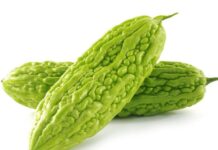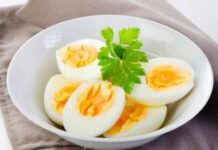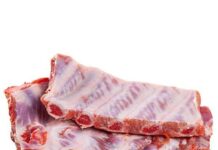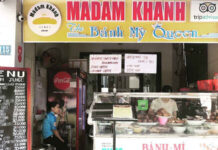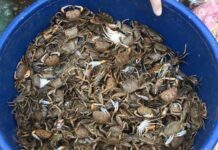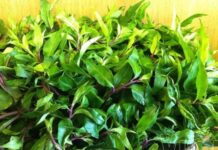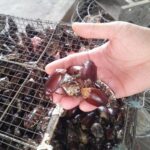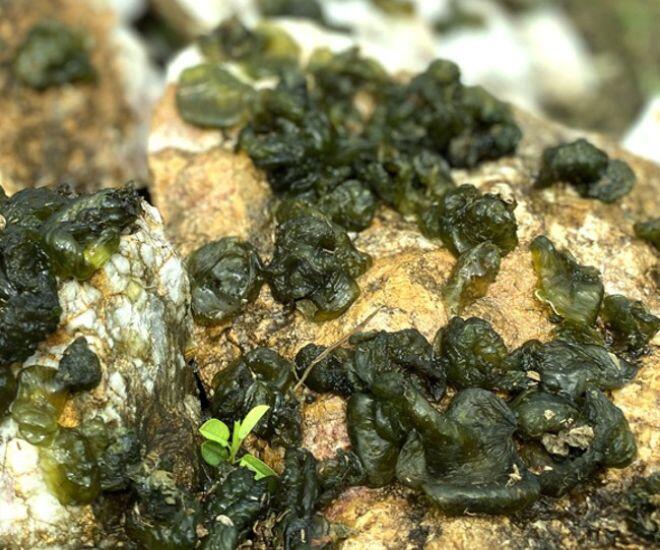
Dún đá, a delicacy unique to Ninh Binh, Vietnam, is a type of bryophyte that grows on the pristine white limestone rocks of the region. The formation of this delicate plant is a wondrous process, as raindrops collect on the rock surfaces, nurturing these tiny organisms.
At first glance, dún đá resembles wood ear mushrooms, but it boasts a translucent green moss color. Its allure lies in its rustic yet captivating beauty. Touching dún đá offers a refreshing, soft, and cool sensation, though it carries a mild, distinctive tangy scent. Interestingly, not just any rock can host dún đá. These bryophytes favor the rocky outcrops of Cat Mountain, where vegetation is sparse, sunlight is abundant, and numerous nooks and crannies provide shelter for rainwater, creating an ideal environment for their growth.
Among these rocks, Mount Nghen, Mount Cau Den (near Bai Dinh Pagoda), Mount Denh, and Mount Duoc (near Gian Khau Bridge) are considered the “golden mines” of dún đá, gifted by nature to Ninh Binh.
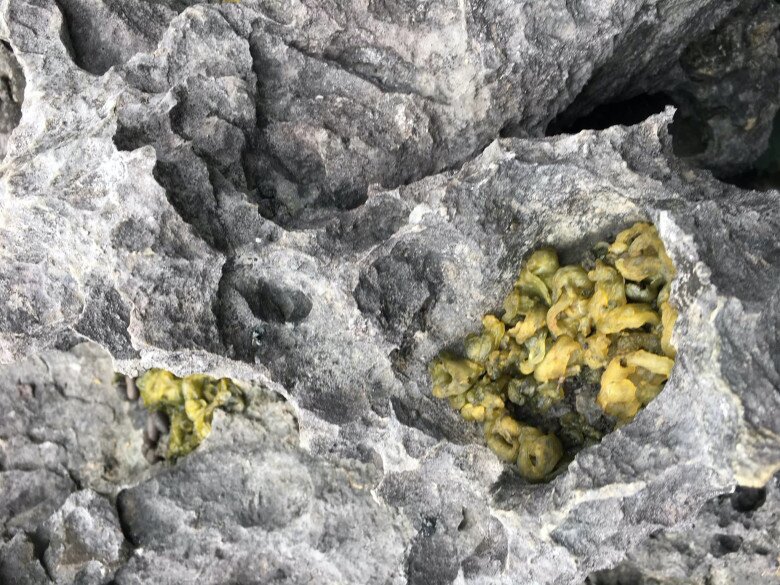
During the challenging decades of the 1960s and 1970s, when rice and vegetables were scarce, dún đá became a valuable source of nutrition, helping to alleviate hunger for the people of Ninh Binh after heavy rains. Large groups would venture into the mountains in search of this “heavenly vegetable.”
However, the quest for dún đá was never easy. It only appears after heavy rainfall and grows on treacherous cliffs. Harvesters braved countless dangers, navigating slippery mountain paths and sharp rocks that could cut their hands and feet at any moment. Additionally, the damp environment posed threats from mosquitoes, leeches, snakes, and centipedes.
Time pressure was also a critical factor. Dún đá had to be harvested immediately after the rain, as the scorching sun would cause it to disintegrate once the weather cleared. This compelled harvesters to venture into the mountains regardless of the weather conditions.
The challenges didn’t end with the harvest; preparing dún đá required meticulousness and patience. Though it has a jelly-like texture, dún đá often clings to dust and leaves when growing on rocks. To ensure hygiene and preserve its delicate flavor, locals would soak the dún đá in rice water and meticulously rinse it multiple times to eliminate any impurities before cooking.
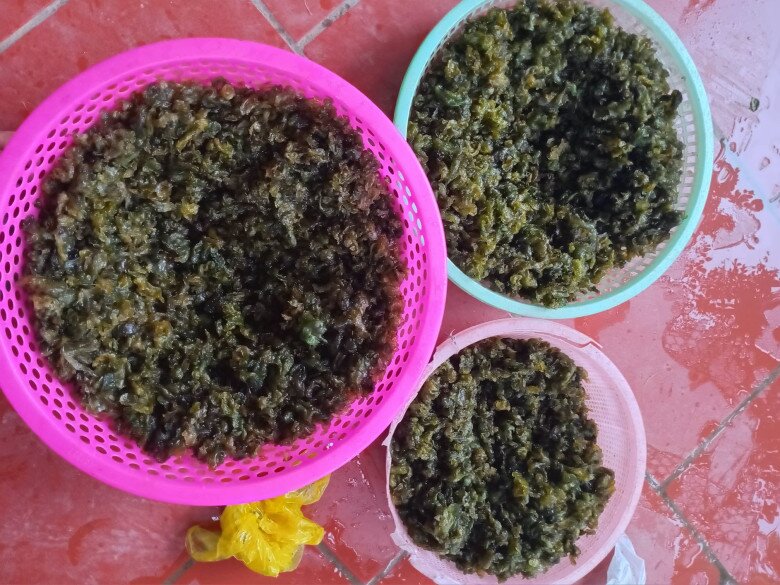
Despite its humble origins as a famine food, dún đá has transcended its role as a mere hunger reliever to become a renowned specialty, attracting numerous tourists to Ninh Binh.
The traditional method of preparing dún đá in Ninh Binh is straightforward: after cleaning, the dún is steamed or boiled until it transforms from green to yellow. In the past, boiled dún was often dipped in fish sauce or served with crab soup. This simple way of eating preserved the authentic flavor of the dún while saving time, fitting the modest lifestyle of the time. Even when served with just salted peanuts, boiled dún offers an irresistible taste.
Today, dún đá has evolved into more elaborate and enticing dishes to cater to diverse palates. Beyond boiling and dipping, it is stir-fried, made into salads, soups, or even pickled and sun-dried for long-term preservation.
Among the various dún đá dishes, the combination of crab soup and blanched dún đá is the most sought-after by visitors to Ninh Binh. This soup uses local freshwater crabs, imparting a sweet and distinctive flavor. The crabs are ground, strained for their juice, and gently boiled to form golden chunks of crab fat. Seasonings, tomatoes, mushrooms, tofu, and herbs are added to the crab broth. The highlight is the dún đá, briefly blanched in the hot soup and served with the crab congee. The fusion of the rich, savory crab soup with the tangy, refreshing, and juicy dún đá creates a unique and memorable culinary experience.
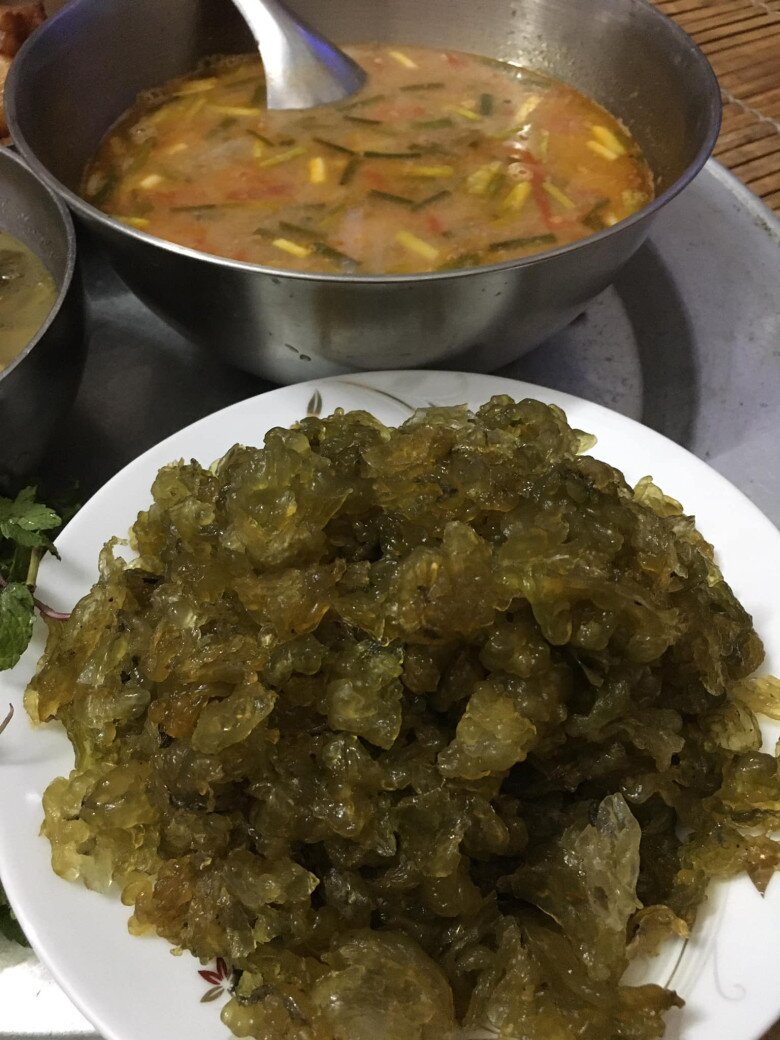
Due to its weather-dependent growth, dún đá is a seasonal delicacy in Ninh Binh’s limestone mountains. The dún đá season typically spans from June to August, coinciding with the rainy season. During this period, fresh dún đá is priced between 20,000 and 30,000 VND per kilogram. However, finding dún đá out of season is incredibly challenging, and even money may not guarantee success. Off-season prices are also significantly higher, ranging from 35,000 to 40,000 VND per kilogram.
To address the scarcity and meet market demands, locals have created dried dún đá. It takes approximately 3-4 kilograms of fresh dún đá to produce one kilogram of dried dún đá, resulting in a higher price for the dried product, ranging from 90,000 to 100,000 VND per kilogram, depending on the season and seller. Dried dún đá not only prolongs the shelf life but also facilitates transportation, expanding its market reach.
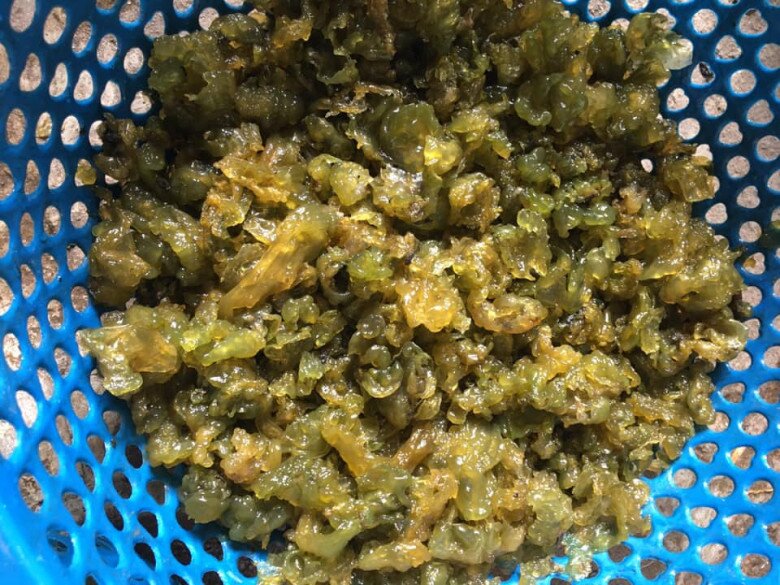
Nowadays, many restaurants and eateries in Ninh Binh purchase dún đá to create specialty dishes for tourists. After undergoing intricate preparation processes, dishes made from dún đá can fetch prices of up to several hundred thousand VND, testifying to the value and allure of this unique delicacy.
With its natural cooling properties and seasonal availability during the summer, dún đá is considered an effective remedy for heat exhaustion. Its refreshing, juicy, and distinctive flavor has captivated countless travelers, enticing them to explore more of Ninh Binh’s “rocky landscape.” Dún đá represents not just a culinary delight but also a narrative of human adaptation to nature and appreciation for the gifts of the land.
The Hottest Spot CDM is Hunting Now: Unveiled by a Reality Show, Breathtaking Scenery Awaits.
“Recently, Ban Lien has emerged as an unexpected destination, gaining widespread recognition thanks to its feature on the reality TV show, ‘Haha Family: The Days of the Open Sky.’ This picturesque locale has captured the hearts of many, offering a unique and captivating experience that has left a lasting impression on viewers and travelers alike.”
Dr. Nam Min and His Professional Philosophy: The Heart of a Healer
With over a decade of experience in the medical field, Dr. Nam Min (born Nguyen Hung Nghia) is renowned not only for his expertise but also for his compassionate and dedicated approach to patient care. For Dr. Min, medicine is more than just physical treatment; it is a mission to bring peace of mind, trust, and hope to everyone he serves.













